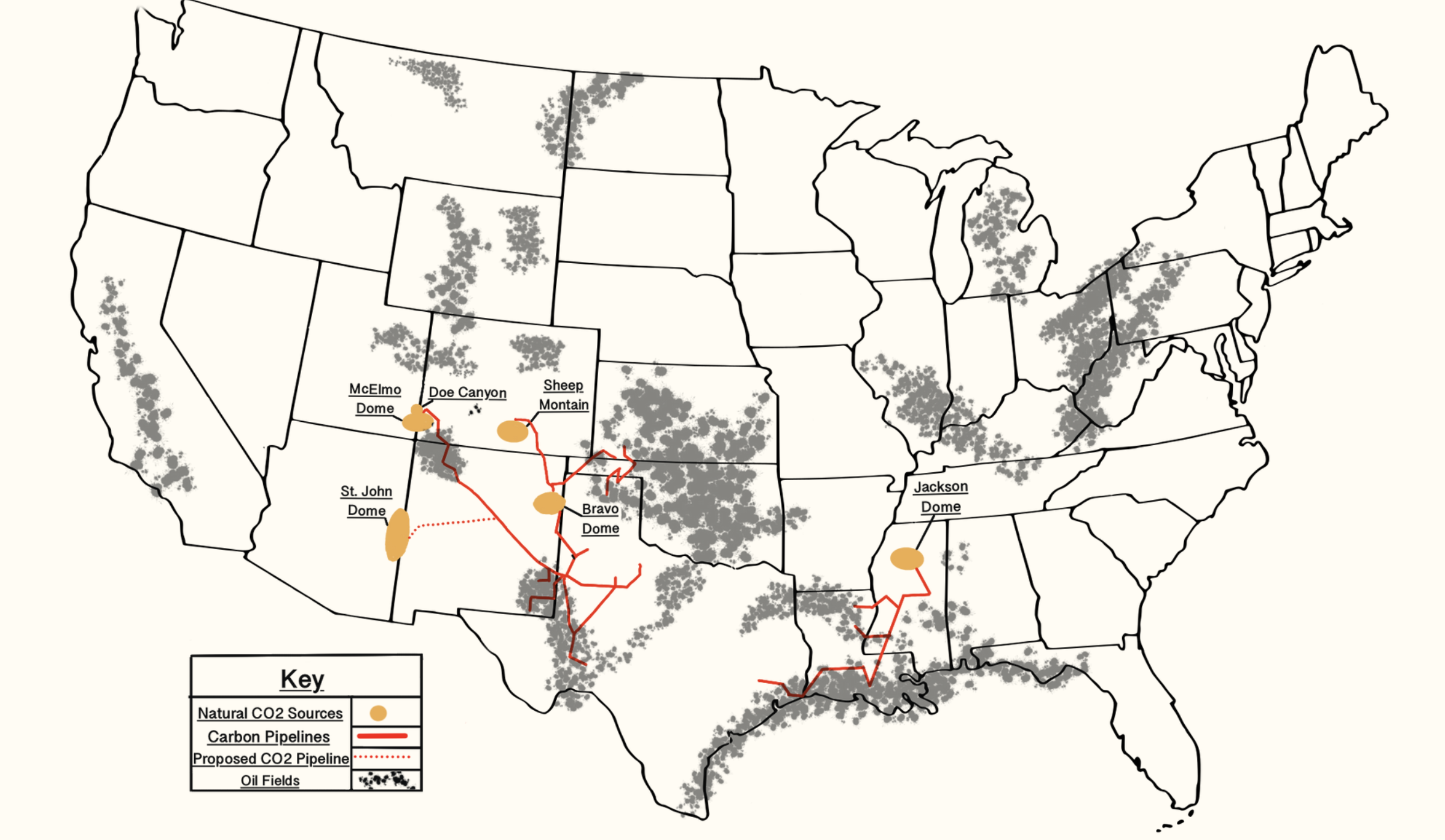Extraction of CO₂ Fact Sheet
EOR Industrial Extraction of CO₂ by Big Oil
INDUSTRIAL OIL PRODUCERS ARE DEMANDING MORE CO₂ EXTRACTION AND ARE RELEASING BILLIONS OF TONS OF CO₂ FROM SEQUESTRATION
Oil Industry Extracts Already Sequestered CO₂
At a time when we should be keeping CO₂ in the ground - the Fossil Fuel industry is unearthing it.
As of 2019, carbon dioxide from natural reservoirs was the source of over 80% of the CO₂ for CO₂ Enhanced Oil Recovery (EOR) in the United States.
With natural reservoir supplies approaching depletion - the fossil fuel industry is looking for new sources of CO₂ “Multiple studies have also called into question the climate benefits of CO₂ EOR production even with anthropogenic carbon, pointing to the process as a net-positive greenhouse gas emitting process.”
CARBON PIPELINE NETWORKS DELIVER THE CO₂ FROM THE NATURAL RESERVOIRS TO THE OIL FIELDS
Pipelines are seen as critical for moving CO₂ from where it is created to the oil wells
Over 10 TCF (Trillion Cubic Feet) of CO₂ from natural sources is extracted in the US per year
An estimated 76 TCF of natural CO₂ has been discovered and is available for extraction
This leaves approximately 7 more years of natural CO₂ supply in the ground
Active CO₂ Extraction Sites Used for Enhanced Oil Recovery
Five discovered CO₂ Reservoirs being depleted:
Jackson Dome (Mississippi)
Bravo Dome. (New Mexico)
McElmo Dome (Colorado and Utah)
Doe Canyon (Colorado)
Sheep Mountain (Colorado)
One discovered site with a proposed pipeline:
St. John Dome
New Sources of CO₂ Needed for Continued Oil Production
Perpetual enhanced oil recovery poses abserious threat to the climate. “The lion’s share of the CO₂ captured from industrial processes doesn’t go back into the ground. Instead, 60 percent of it is used to extract more oil.” By leaving new sources of CO₂ untapped, we can leave billions of barrels of oil in the ground and avoid a dire threat to our planet and our survival.


